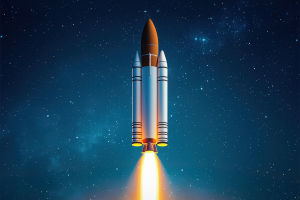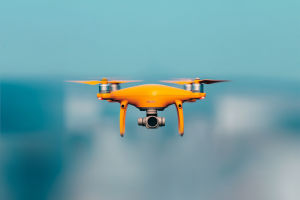In the 1960s and 1970s, the United States set a historic milestone with the Apollo missions, landing humans on the Moon for the first time. Fast forward to today, and humanity is once again setting its sights on our lunar neighbor.
NASA's Artemis program is leading the charge, with a goal not just to visit the Moon again but to create a sustainable human presence there. This new era of lunar exploration holds immense potential, both scientifically and economically.
But what exactly is the significance of returning to the Moon, and what challenges do we face in making it a reality? Let's take a closer look.
NASA's Artemis Program: A New Mission
The Artemis program, named after the Greek goddess of the Moon and twin sister of Apollo, marks a fresh, ambitious chapter in space exploration. Unlike the Apollo missions, which were primarily focused on getting to the Moon and returning safely, Artemis has broader goals that span scientific discovery, resource utilization, and establishing a long-term human presence.
One of the key goals of Artemis is to land the first woman and the next man on the Moon, specifically at the lunar South Pole. This area is of particular interest because it is believed to contain water ice, which could be crucial for supporting life and producing fuel for future missions to Mars. In essence, Artemis aims to build a sustainable outpost on the Moon, one that can support astronauts for extended periods, with plans to set up the Lunar Gateway—a space station that will orbit the Moon and serve as a staging point for deeper space exploration.
Scientific Potential: What Can We Learn?
The Moon is a treasure trove of scientific information waiting to be uncovered. One of the primary reasons for returning is to study the Moon's geology and history in greater detail. By examining the surface and subsurface, scientists hope to learn more about the early Solar System and how planets, including Earth, were formed.
Artemis will also enable us to study the effects of long-term space travel on the human body. Staying on the Moon for extended periods will offer insights into how astronauts can survive and thrive on other celestial bodies, such as Mars. This will involve studying the Moon's environment, including its gravity (which is only one-sixth that of Earth's) and radiation levels, both of which can have profound effects on human health. Learning how to mitigate these challenges is key to making space exploration sustainable.
Moreover, the Moon's surface is home to an abundance of resources. Water ice, as mentioned earlier, could be used for drinking water or converted into hydrogen and oxygen to create rocket fuel. This would be a game-changer for deep space missions. Mining the Moon's regolith (the layer of loose soil and dust) could also yield valuable minerals, some of which are rare on Earth but may be essential for building infrastructure or manufacturing in space.
Challenges of Lunar Exploration
Despite the excitement surrounding the Artemis program, returning to the Moon is no small feat. The first challenge is technology. Developing the spacecraft, habitats, and life-support systems necessary to sustain human life on the Moon for extended periods is a complex task. NASA and its international partners, including the European Space Agency (ESA) and private companies like SpaceX, will need to overcome hurdles related to propulsion, radiation shielding, and environmental sustainability.
Spacecraft like the Space Launch System (SLS), a heavy-lift rocket being developed by NASA, will be critical to carrying astronauts and supplies to the Moon. However, the SLS is not expected to be ready until the mid-2020s, and there are ongoing debates about its cost and reliability.
Another challenge is the Moon's harsh environment. The lunar surface has extreme temperature variations, ranging from scorching heat during the day to freezing cold at night. There's also the issue of lunar dust, which is highly abrasive and can damage equipment and spacesuits. The lack of an atmosphere means there is no protection from the Sun's harmful radiation, making radiation shielding a critical component of lunar exploration. Developing technologies to protect astronauts from these conditions is essential.
Building a Sustainable Presence
The ultimate goal of Artemis is not just to visit the Moon again but to establish a sustainable human presence there. This involves creating infrastructure that can support long-term habitation, including habitats, power sources, and life support systems. One of the proposed solutions is the use of in-situ resource utilization (ISRU), which means using resources found on the Moon to support life. This could include extracting water from ice deposits, harvesting energy from solar power, and even using lunar soil to build structures.
However, building a permanent outpost on the Moon will require significant investment, international collaboration, and time. It will also need to be scalable, allowing for future missions to Mars and beyond. The experience gained from building a sustainable presence on the Moon could serve as a critical stepping stone for the next phase of human space exploration.
Implications for the Future of Space Exploration
The return to the Moon through Artemis is not just about revisiting old ground—it's about setting the stage for the next big leap in human exploration. A sustainable lunar presence could pave the way for future missions to Mars, asteroids, and other parts of the solar system. The technologies developed for lunar exploration will likely be used for these deeper space missions, creating a ripple effect throughout the space industry.
The scientific discoveries made on the Moon could have profound implications for our understanding of the universe and our place within it. By studying the Moon's geological history and uncovering its resources, we can gain a better understanding of Earth's early history and perhaps even unlock the secrets of life beyond our planet.
Conclusion: The Next Great Frontier
As we look forward to the future of space exploration, returning to the Moon holds tremendous significance. With NASA's Artemis program leading the way, we are on the cusp of a new era of lunar exploration. It promises scientific discoveries, technological advancements, and the potential to make space travel more sustainable. But the road ahead is not without its challenges—technical, environmental, and logistical hurdles remain. Yet, with global cooperation, innovation, and determination, humanity's return to the Moon could be the first step toward a new frontier in space.
What are your thoughts on humanity's return to the Moon? Do you believe that we will be able to establish a permanent lunar base? Feel free to share your thoughts in the comments below!


